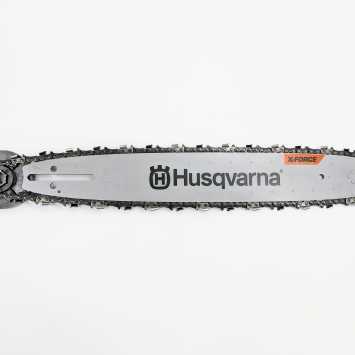Welcome to our all-new blog series that, over the next few blogs, takes a detailed look at chainsaw chains.
Why Chainsaw Chains Need To Be Maintained
A chainsaw chain needs to be sharp in order to cut effectively, and over time maintained to make sure it continues to offer good cutting performance. There are key safety aspects that impact the operator. Some examples include where maintenance is neglected or carried out badly, such as increased kickback potential or elevated, harmful vibration levels. A chainsaw chain that cuts correctly will also offer a level of passive or background safety.
As we often discover in our chainsaw maintenance courses, there are a lot of knowledge gaps and misinformation around chain sharpening and indeed all the topics that build to a mastery of chainsaw chain care & use.
Theoretical chain knowledge & sharpening practical skills are of course a key part of the City & Guilds Assessment in Chainsaw Maintenance 201, and Lantra Awards Integrated and Benchmark Assessment.
Over the years and various qualification reviews, there has been a change to this assessment element and the most recent update was in the summer of 2021. This almost went back to the early days, with previously axed vocabulary such as pitch and gauge making a welcome comeback. The information we deliver in our training courses hasn’t changed much over the years, and with this topic more than any other, a full understanding makes an explanation of the relatively limited amount of assessment answers straightforward.
My introduction to sharpening was in the late 1980s and the development of skill was the inverse of the logical, sequential skill build-up shown here. When left to log cordwood into firewood lengths, I would invariably hit some debris or the ground and damage the 3/8 pitch full chisel Stihl chain - usually on a Stihl 064 power unit. I used a round file and free sharpened on-site with limited success. Instruction was limited to derisory comments about the result - a begrudgingly delivered standard set. This cycle was repeated many times over months and improvement was incremental. Perhaps this experience is common to many entering a work setting and then accessing professional training later.
Fast forward to the early 2000s and I had to re-learn to sharpen using a range of tools and aids as part of the preparation to become a Lantra Awards Instructor, a useful exercise as aids tools are a great help to those new to chain maintenance.
There are multiple different ways to sharpen a chainsaw chain. We aim to show the methods likely to give the best results for those new to chainsaw maintenance. Obviously, as skill develops, it’s worth experimenting with a range of methods to find the one that works best for you.
Finally, it takes time to develop skills in chain sharpening, especially on-site without the benefits of workshop facilities.
As ever with these blog articles they are intended as a supplement to direct personal training, not a substitute for it. Chainsaw use and maintenance can be dangerous, so it’s imperative to apply the risk assessment process and implement a range of controls to reduce the chance and severity of the injury.
New for this blog is a graphic showing the mind map process of detailing, categorising and linking all the relevant topic areas and vocabulary - it might help in seeing the bigger picture in a more visual format, and getting familiar with some of the concepts and language we’ll be using over the next few blog posts.
- We’ll take a look at the chain as part of the cutting attachment, that is the drive sprocket or gear, the guide bar and the chain. All three work together to deliver a smooth & effective cutting performance.
- Chain choice & maintenance has a big impact on safety, yet many are oblivious to the extra features that can for example reduce kickback potential.
- A thorough understanding of chain function, components and interaction help users with safety, use and care.
- Linked to components are chain specifications, the physical size of the chain that allows it to correctly fit the saw, guide bar and sprocket.
- Chain sharpening follows an accurate assessment of physical condition and identification using the above specifications to correctly select and deploy sharpening tools. We will focus on workshop sharpening, but give some hints on field maintenance.
- A range of common chain sharpening & condition problems will be covered in a troubleshooting section, such as un-even cutter length, incorrect angles and depth gauge settings.


